Table of Contents
Problem Starting Car: Mercedes-Benz CLA 45 (W118) with M139 Engine
One of the most frustrating issues for car owners is a problem starting car. In this article, we explore a detailed case study of a Mercedes-Benz CLA 45 (W118) equipped with the M139 engine, addressing diagnostic steps, findings, and the solution to a complex starting issue.

Case Study Overview
Vehicle: Mercedes-Benz CLA 45 (W118) with M139 Engine
Customer Complaint:
- The engine doesn’t work.
- The oil level indicator appears in the instrument cluster.
Diagnosing the Problem Starting Car
Addressing a problem starting car in a modern high-performance vehicle like the CLA 45 requires a methodical diagnostic process. Here’s how the investigation unfolded:
Short Test
Conducted to identify any active or stored fault codes within the Engine Control Unit (ECU).



Check Actual Value of Fuel Pump
Verified the fuel pump’s operational status to ensure it delivers sufficient fuel pressure.

Check Actual Value of High-Pressure Control
Assessed the pressure regulation within the high-pressure fuel system for discrepancies.
Check Voltage on Rail Pressure Sensor (B4/25)
Measured voltage output to ensure the rail pressure sensor provides accurate data to the ECU.

Check Continuity Between ECU and B4/25
Tested the electrical connection between the ECU and the rail pressure sensor to confirm uninterrupted communication.
Workshop Findings
The diagnostic tests revealed multiple issues contributing to the problem starting car:
- Fault Code Found on ECU (ME)
A fault code was logged in the Engine Control Unit (ME), pointing to an internal malfunction. - Actual Value High-Pressure Control
Abnormal readings were detected in the high-pressure control system, suggesting a fuel delivery issue. - Voltage on Rail Pressure Sensor (B4/25)
Voltage levels deviated from the norm, indicating a fault with the sensor or its electrical pathway. - Continuity Between ECU and B4/25
Disrupted continuity was observed, confirming an electrical fault between the ECU and the rail pressure sensor.
Resolving the Problem Starting Car
The root cause of the issue was traced back to a faulty Engine Control Unit (ME). Here’s how the rectification process unfolded:
- Replace Engine Control Unit (ME)
The defective ECU was replaced with a new unit. This action resolved the fault codes, restored proper high-pressure control values, corrected rail pressure sensor readings, and reestablished electrical continuity. Post-replacement testing confirmed that the engine now starts reliably.


Key Takeaways
- Thorough Diagnostics Are Crucial
Addressing a problem starting car requires step-by-step diagnostics to pinpoint the exact cause and avoid unnecessary repairs. - Role of the ECU
The Engine Control Unit (ME) is a critical component that governs fuel delivery, ignition, and sensor communication. Faults within the ECU can result in complete engine failure to start. - High-Pressure Fuel System Sensitivity
In turbocharged engines like the M139, accurate high-pressure control is essential for starting and running the engine efficiently. - Ensure Electrical Integrity
Faulty wiring or interrupted continuity can mimic component failure. Always verify electrical pathways during diagnostics. - Use Advanced Diagnostic Tools
Equipment like a short test device and voltage analyzers are indispensable for resolving issues in modern vehicles.
Conclusion
This case study of the Mercedes-Benz CLA 45 (W118) highlights the importance of a structured approach to resolving a “problem starting car.” By methodically diagnosing and replacing the faulty Engine Control Unit (ME), the vehicle was restored to optimal functionality. This example serves as a guide for both professionals and enthusiasts to tackle similar issues with confidence and precision.
Not starting car
Common Reasons a Car Won’t Start
- Battery Issues
- Symptoms: Clicking sound when turning the key, dim lights, or no electrical response.
- Cause: Dead or discharged battery, corroded terminals, or faulty alternator.
- Solution: Jumpstart the car, clean terminals, or replace the battery.
- Faulty Starter Motor
- Symptoms: Grinding or whining noise, or the engine does not crank.
- Cause: Worn-out starter motor or issues with the solenoid.
- Solution: Replace the starter motor or repair the solenoid.
- Fuel Delivery Issues
- Symptoms: Engine cranks but doesn’t start.
- Cause: Empty fuel tank, clogged fuel filter, or failing fuel pump.
- Solution: Refill fuel, replace the filter, or repair the pump.
- Ignition Problems
- Symptoms: No response when turning the key, or intermittent starting.
- Cause: Worn-out ignition switch or damaged key fob.
- Solution: Replace the ignition switch or key fob battery.
- Electrical or Sensor Faults
- Symptoms: Dashboard warning lights, engine cranks but doesn’t start.
- Cause: Faulty ECU, bad sensors (e.g., crankshaft or camshaft position sensors), or wiring issues.
- Solution: Scan for error codes, inspect sensors, and repair wiring.
- Security System Malfunction
- Symptoms: Engine immobilized or no response from the ignition.
- Cause: Anti-theft system failure or unrecognized key.
- Solution: Reprogram the key or troubleshoot the anti-theft system.
Proactive Measures to Avoid Starting Problems
- Routine Maintenance: Regularly check the battery, fuel system, and ignition components.
- Keep Sensors Clean: Ensure sensors are free from dirt or oil buildup.
- Drive Regularly: Prevent battery drain by driving the car frequently or using a trickle charger.
- Inspect Wiring: Check for loose connections, especially after long trips or rough terrain.
Why Diagnostics Matter
A thorough diagnostic process is critical to accurately identify and resolve the issue. Use tools like OBD scanners to check for fault codes and measure sensor outputs. This avoids unnecessary repairs and saves time.
Tips for DIY Troubleshooting
- Visual Inspection
- Look for corroded battery terminals, loose wires, or disconnected fuel lines.
- Listen for Sounds
- Clicking or grinding can indicate starter motor issues; silence may mean a dead battery.
- Test Components
- Use a multimeter to check battery voltage or a pressure gauge for fuel delivery.
- Reset Systems
- Disconnect the battery for a few minutes to reset the ECU or immobilizer system.


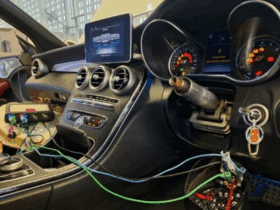
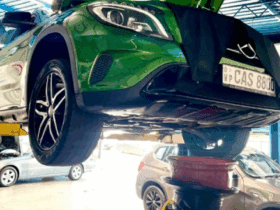
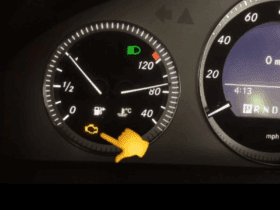
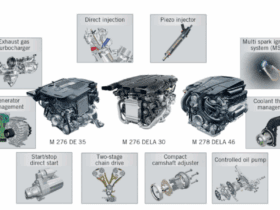
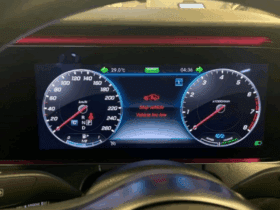
Leave a Reply